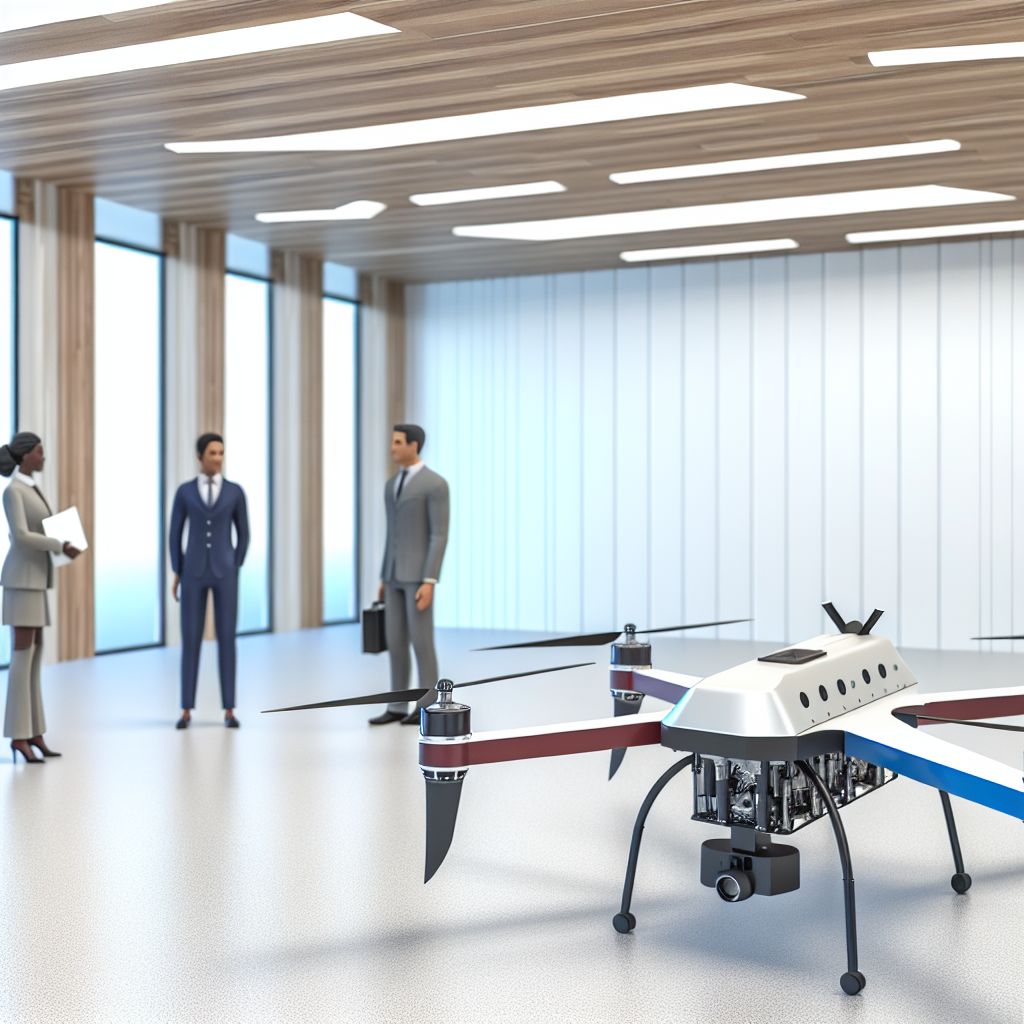In the Space industry context, a Drone-spacecraft typically refers to an unmanned spacecraft designed for various space exploration tasks such as orbiting planets, landing on Celestial bodies, or performing specific scientific experiments and observations without direct human control.
Description

Drone-spacecraft, often called space drones or autonomous spacecraft, are equipped with advanced robotics, Artificial Intelligence, and Communication technologies that allow them to operate independently in the Harsh Environment of space. These spacecraft can make decisions, adjust their missions based on Real-time Data, and perform complex operations like docking, repairs, or surface exploration.
Application Areas
Drone-spacecraft are utilized in several key areas:
- Planetary Exploration: Conducting missions on other planets, moons, or asteroids to collect samples, study the surface, and analyze the Atmosphere.
- Satellite Servicing: Performing maintenance tasks such as refueling, repairing, and upgrading satellites in Orbit.
- Space Debris Management: Identifying and potentially capturing or redirecting space debris to mitigate Collision risks.
Well-Known Examples
- NASA's Mars Rovers: These are essentially drone-spacecraft designed to navigate and conduct scientific missions on the surface of Mars autonomously.
- Voyager Probes: Although not typically referred to as drones, these are unmanned spacecraft sent on long-term missions to study the outer solar System and beyond, operating autonomously as they travel through space.
Treatment and Risks
The Development and operation of drone-spacecraft involve sophisticated Engineering and rigorous testing to ensure functionality and safety. Risks include system failures, communication delays or losses (especially in deep-space missions), and the physical dangers of space such as Radiation and micrometeoroids.
Summary
Drone-spacecraft are vital tools in the field of space exploration, allowing humanity to reach and study distant locations in the solar system and beyond without the risks and costs associated with human crews. Their ability to operate autonomously and perform Critical tasks under challenging conditions makes them an indispensable asset in the ongoing exploration and utilization of space.
--
Related Articles to the term 'Drone-spacecraft' | |
| 'Teleoperation' | ■■■■■■■■■■ |
| Teleoperation in the space industry refers to the remote control of spacecraft, robotic systems, or instruments . . . Read More | |
| 'Autonomous mobility' at top500.de | ■■■■■■■■ |
| Autonomous mobility in the industrial context refers to the use of self-guided and self-operating vehicles, . . . Read More | |
| 'Robot' | ■■■■■■■■ |
| Robot in the space industry context refers to an autonomous or semi-autonomous mechanical device designed . . . Read More | |
| 'In-situ' | ■■■■■■■■ |
| In the space industry context, in-situ refers to the observation, analysis, or utilization of materials . . . Read More | |
| 'Satellites and Spacecraft' | ■■■■■■■■ |
| Satellites and Spacecraft: Satellites and spacecraft are essential technologies in the space industry, . . . Read More | |
| 'Taxonomy' | ■■■■■■■■ |
| Taxonomy in the space industry context refers to the systematic classification and organisation of objects, . . . Read More | |
| 'Computing' | ■■■■■■■■ |
| Computing in the space industry refers to the use of computer systems, software, and data processing . . . Read More | |
| 'Hemisphere' | ■■■■■■■■ |
| Hemisphere in the space industry context refers to half of a spherical celestial body, such as a planet, . . . Read More | |
| 'Precision Agriculture' at top500.de | ■■■■■■■ |
| Precision Agriculture refers to an integrated agricultural management strategy that employs information . . . Read More | |
| 'Spacecraft' | ■■■■■■■ |
| A spacecraft is a vehicle or machine that is designed and built to operate outside of the Earth\'s atmosphere, . . . Read More | |
